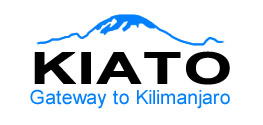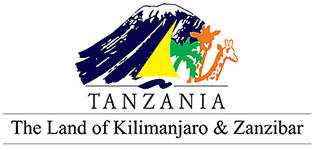Zanzibar Island is a jewel in the ocean, surrounded by beaches that rate among the finest in the world. Here you can swim, snorkel or just lounge the hours away, while shoals of luminous fish graze over nearby coral gardens and pods of dolphins frolic offshore.
The island has captured the imagination of explorers and traders for centuries, including the Chinese, Persians, Portuguese, Arabs, Dutch and British. The Persians and Arabs settled and ruled this cluster of islands, turning it into a major route for traders on the high seas,heading towards the African continent. With this influence, Zanzibar has become predominantly Islamic complimented with a mixture of vibrant cultures also including Christians, Hindus and Sikhs.
Some of the earliest visitors to Zanzibar were Arab traders, whosailedin their dhows, carriedby the Monsoon winds from Oman, to primarily trade in ivory, slaves and later spices. The two main islands, Unguja (known as Zanzibar Island) and Pemba, provided an ideal base for the Omani Arabs, being relatively small, and therefore fairly easy to defend. From here it was possible for them to control thousands of miles along East Africa’s mainland coastline, and in 1832, Sultan Seyyid Said, of the Busaid Dynasty of Oman, moved his Sultanate from Muscat to Zanzibar.
From its beautiful sand fringed beaches emerges an avid, adventure filled and u history, as the initial ‘stepping stone’ into the wild interior of the African continent. It’s past is woven in a tapestry of intrigue and endless adventure, stories of treasure filled ships, the lucrative trade in slaves, spices, ivory, and the rise and fall of dynasties built on magnificent palaces and grandeur.
The name Swahili comes from the Arab word meaning ‘coast’, and to date the core of Zanzibar remains a magnificent and diverse culture. It represents the very best in unspoiled beaches, crystal clear waters and a living history book back through time.
For these reasons and more, Zanzibar Island (officially called Unguja) is the archipelago’s focal point, and the most popular destination for visitors, but choose your spot carefully. While it’s easy to find tranquil beauty or party buzz (or both), increasing development threatens the island’s ineluctable magic and fragile community resources.
Pemba Island
Pemba is an island forming part of the Zanzibar Archipelago in Tanzania, located approximately 50 km north of Unguja, the largest island in the archipelago and main visitor destination. Visitors to Pemba however with find a dramatically different experience from the increasingly touristy and resort-developed Unguja, as Pemba has managed to maintain a strong sense of traditional identity within relative isolation.
With a land area of 988 square km it is situated about 50 km to the north of Unguja, the largest island of the archipelago. In 1964, Zanzibar was united with the former colony of Tanganyika to form Tanzania. It lies 50 kilometres (31 mi) east of mainland Tanzania, across the Pemba Channel. Together with Mafia Island (south of Unguja), these islands form the Spice Islands (not to be confused with the Maluku Islands of Indonesia).
Most of the island, which is hillier and more fertile than Unguja, is dominated by small scale farming. There is also large scale farming of cash crops such as cloves.
In previous years, the island was seldom visited due to inaccessibility and a reputation for political violence, with the notable exception of those drawn by its reputation as a center for traditional medicine and witchcraft. There is a quite large Arab community on the island, who immigrated from Oman. The population is a mix of Arab and original Waswahili inhabitants of the island. A significant portion of the population also identifies as Shirazi people.
The most important towns in Pemba are Chake-Chake (the capital), Mkoani, and Wete, which is the largest city. The centrally located Chake-Chake is perched on a mound with a view to the west on a bay and the tiny Misali Island, where the tides determine when a dhow can enter the local harbour. Pemba is, with the exception of a strip of land along its eastern coast, a very fertile place: besides clove trees, the locals grow mainly rice, coconut, bananas, cassava and red beans (called maharagwe in the Swahili language).
Pemba is home to several dive sites, with steep drop-offs, untouched coral and very abundant marine life.
Mafia Island
Mafia Island off the coast of Tanzania must be one of the Indian Ocean’s most hidden gem.
With white sandy beaches, dazzling aquamarine waters and refreshingly few tourists, Mafia is often described as Zanzibar 30 years ago. A laid-back eco-alternative with no tarmac roads, few hotels, no shops, no ATMs (credit cards are accepted at the up-market lodges) which is not geared for mainstream tourism. Be warned, if you want fancy shops and a wild night-life, Mafia isn’t for you!!!
There are six lodges on Mafia, five (Chole Mjini , Kinasi Lodge , Mafia , Pole Pole and Shamba Kilole) clustered closely together within Chole Bay and one, the Ras Mbisi Lodge, on the western side of the island . Additionally there are a handful of backpacker friendly ‘hotelis’ in Kilindoni, the main town (the port and airstrip are here).
Hopefully Mafia Island will not becomes the ‘next destination’ but remain an eco-friendly niche. Currently there are about 3000 to 4000 over-night stays annually on the island. However an annual Mafia Dance Festival is planned and will take place each August on remote beaches bordered by coconut plantations.
Whale sharks and Humpback Whales can be found in the waters surrounding Mafia Island, as can turtles and so rumor has it so can dugongs.
Ras Kisimani is the far western cape of the main island, facing the Rufiji Delta. Kisimani Mafia, just north-east of the Cape is KiSwahili for “the place of the well”. An old town dating to the 12th Century has been drowned by rising sea levels and a collapsing foreshore for over 100 years. The Kinasi library contains a full account of the archaeology of these ruins, once the most important town on Mafia, especially from the 12th to 14th Centuries. It was founded by Bashat, one of the sons of the first Sultan of Kilwa, and extended the control of the Sultan to Mafia. The power and wealth of the Sultan of Kilwa was based upon gold, ivory and customs tariffs on all goods traded on the southern coast. In its time it was far more important the Zanzibar but its economic influence waned upon the arrival of the Portuguese at the end of the 15th Century. There is little left of the town now, but visitors can easily find many beautiful potsherds and coins in the ruins and on the beautiful palm-fringed beach. The circular rock weights used to confine slaves at night can also be found here. Due to erosion the old well from which the town took its name now stands on the beach. The whole area is now a protected core zone of the Mafia Island Marine Park.




